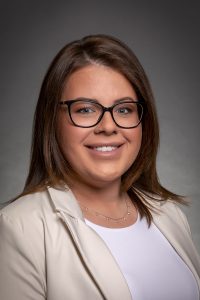Like its fellow community banks, Tioga State Bank is a locally owned and operated financial institution that reinvests, within the communities it serves, the dollars people deposit. And just like its fellow community banks, Tioga State Bank is feeling the growing burden of regulatory requirements.
One particularly cumbersome requirement is the “quarterly call report” required four times a year. The call report was the subject of a recent survey by the Independent Community Bankers of America (ICBA), a group representing more than 6,500 community banks across the country. Tioga State Bank participated in the survey.
The ICBA released the results of its survey on July 9 and the results were not surprising. Community banks report that the required quarterly reports are taking up more time and resources than ever.
“Main Street community banks do not have large compliance teams to keep up with increasing government red tape, which means resources they devote to those reporting requirements cannot be used to promote local economies,” Terry Jorde, ICBA senior executive vice president and chief of staff, said in a release announcing the survey results. “ICBA’s survey clearly demonstrates the need for a shorter and simpler call report for smaller, less complex institutions.”
“This is a monster of a report to do four times a year,” says Anne McKenna, senior vice president of finance and control at Tioga State Bank (TSB). In the past six years, the report has grown from 40 pages of questions to 80 pages — with each page containing about 20 questions covering all financial aspects of the bank. On top of that, the call report comes with about 700 pages of instructions to read to ensure the report is done correctly, she notes.
With less than $500 million in assets, there are some questions TSB doesn’t have to answer, McKenna adds, but the employees compiling the report still need to read through the entire packet to learn which ones they can leave blank.
The end result is about 60 hours of staff time — just in the finance department — four times a year to compile the report. That does not factor in times when the finance department needs to work with or reach out to other departments for information.
According to the ICBA survey results, 73 percent of responding banks indicated that the number of hours required to prepare the call report has increased. At the same time, 86 percent of banks said the cost of preparing the report has increased and one in three banks said the number of employees involved in preparing the call report has increased. More than 60 percent of responding banks said it takes at least two employees to complete the report each quarter.
Added staff at TSB
McKenna says TSB has had to add both finance and compliance employees in recent years to keep up with ever-increasing regulatory requirements, but it’s consumers who end up paying the price. The more people and resources Tioga has to devote to regulatory issues takes away time and resources that could be devoted to consumer activity, she notes.
“We’re watching that happen, and there really isn’t anything we can do about it because we are mandated,” she says of the increasing toll of regulatory demands.
To help alleviate some of the regulatory burdens, the ICBA (www.icba.org) has followed up its survey with a petition asking banking regulators to ease the regulatory burden on community banks. The petition, found online at http://cqrcengage.com/icba/app/sign-petition?0&engagementId=55054, addresses the Financial Institutions Examination Council, the Federal Deposit Insurance Corporation, the Federal Reserve Board, and the Office of the Comptroller of the Currency and asks them to streamline the quarterly call report for community banks.
The organization is asking bank regulators to approve a measure that would allow well-capitalized community banks to complete a short-form call report for the first and third quarters, only filing the longer report in the second and fourth quarters.
“We are fully on board with what they are recommending,” McKenna says, adding she would even support taking the measure a step further and replacing the long form with the short one for smaller, uncomplicated banks like Tioga State Bank.
While she understands the need for regulation, such measures have to be balanced with a real perspective of the effect that regulatory burden has on financial institutions and their customers, McKenna says. “We’re hoping to get the regulatory bodies to see the inefficiencies they are building in here.”
Headquartered in Spencer, Tioga State Bank (www.tiogabank.com) had about $400 million in total assets, $300 million in deposits, and $266 million in loans as of the end of June. Along with the Spencer location, Tioga has branch offices in Binghamton (two locations), Candor, Endwell, Newfield, Owego (two locations), Van Etten, Vestal, and Waverly.
Contact The Business Journal at news@cnybj.com



